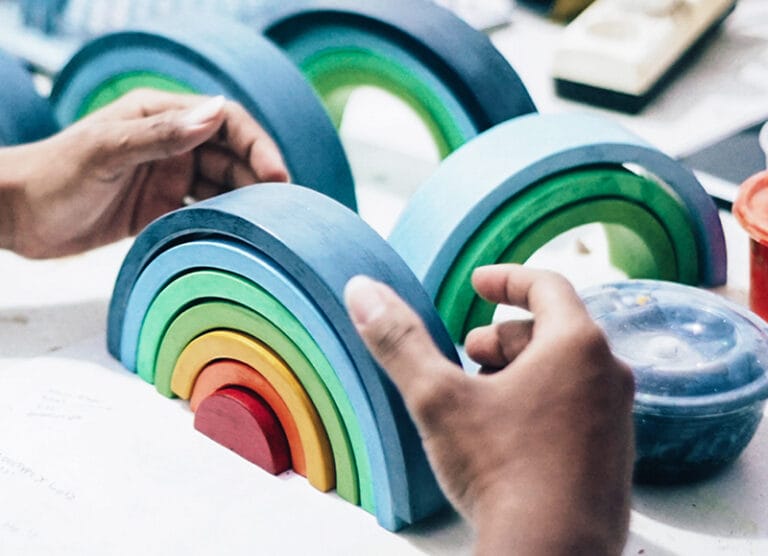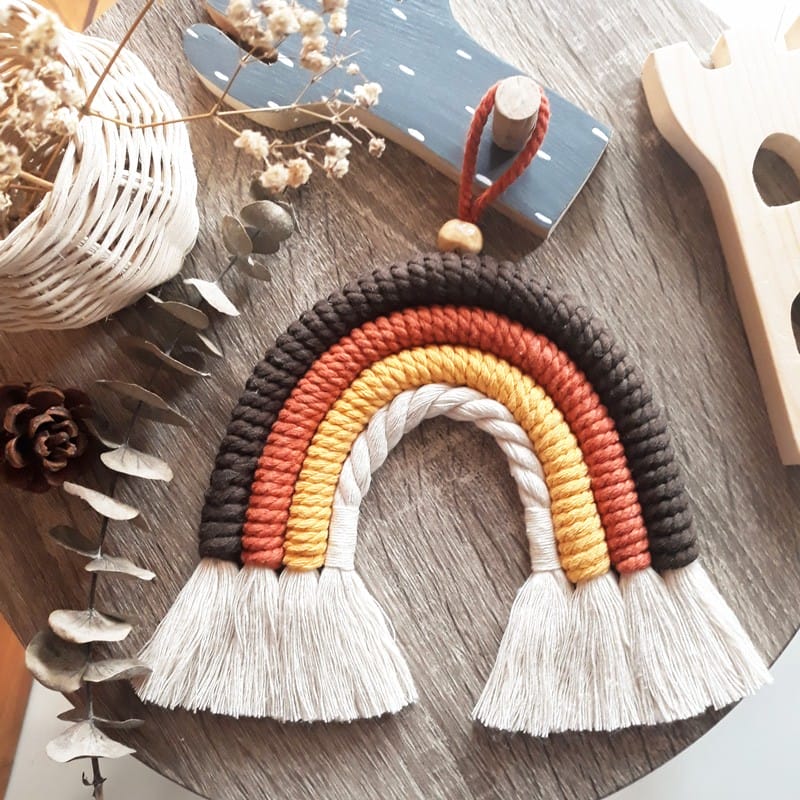Perfectly Imperfect Wooden Toys
The Japanese have an aesthetic philosophy called wabi-sabi: the embrace of natural imperfections. It refers to finding beauty in things that are asymmetric, unfinished or irregular. Wabi-sabi is a sign of life, a reminder that everything evolves and sustains beauty in just being. This timeless concept — more layered than we can describe here — encapsulates what we appreciate about wooden toys in their natural, imperfect state.
Many wooden toys are handcrafted, which makes each piece even more one-of-a-kind. No two pieces will look exactly alike and this sets it apart from the uniformity we’re used to with plastic toys and other modern products. Our expectations have to be (re)set properly when it comes to wooden toys, so that we can appreciate them for what they are, and what they are not.

Photo Credit: Letter in Pine
Here are a few natural imperfections to expect with handcrafted wooden toys.
KNOTS, SPOTS AND STRIPES
A tree throughout its life develops knots, spots and stripes that represent its life story. Toymakers usually don’t cut out these marks because doing so is largely an unsustainable practice. That dark knot in the middle of your rainbow, or an inconsistent grain pattern on your blocks — those are unique, natural and perfectly safe for children.
ASYMMETRY
Asymmetry can drive the perfectionist in us crazy but when buying handcrafted wooden toys, it comes with the territory. This can mean asymmetry in colors, grain patterns, cuts or shapes, especially for designs that integrate the natural shape of the wood. Wooden rainbows — recently popular — are especially prone to asymmetry. But that certainly doesn’t make them any less fun or functional!
VARIED TEXTURE
Handcrafted wooden toys usually retain their natural texture, which in most cases is not as smooth as plastic toys. This texture can actually help early learners develop their grip, as well as expose them to a new sensory experience. As kids play with their wooden toys, they’re likely to add their own dents and scuffs, ultimately adding to a perfectly unique texture.
UNEVEN PAINT COLORS
Not only do different types of wood absorb paint differently, different parts of the same piece may as well. We also see different types of paint, stains and dyes that only add to the variations you see among wooden toys. Toymakers make their own choices in this regard and those choices become part of their style.
With all this said, wooden toys can indeed have real issues. If your toys have splinters, cracks or chips, then those should be fixed or replaced before giving it to your child to play. This may happen from time and time and at Schoolyard, we’re happy to work with you to resolve these issues. Please remember though that many handcrafted wooden toys are made by small workshops, and a little kindness for their art goes a long way.
One final point from us. Not all wooden toys are entirely handcrafted, and you’ve definitely seen toys made with machines that achieve greater consistency. However, this doesn’t preclude them from the natural properties of wood, so imperfections will still come through. Wabi-sabi. Across the board though, many wooden toys offer similar benefits for play, and your choice for one over another — if any, even — is up to you.


